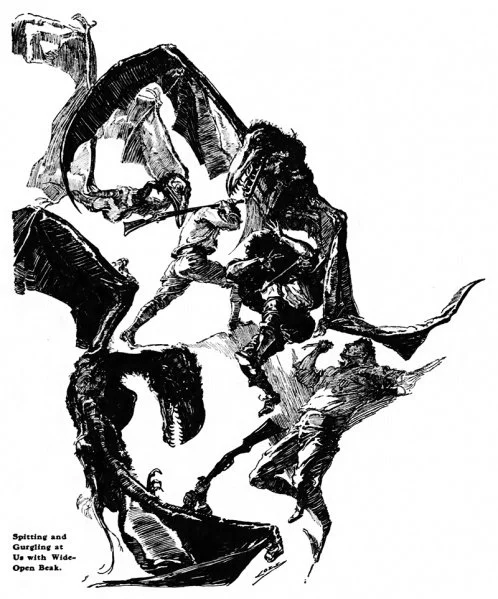Joseph Clement Coll -- A Century Gone
Coll in his thirties.
On this day in 1921, Joseph Clement Coll died suddenly of appendicitis at the age of forty. Widely-respected for his pen-and-ink technique, Coll had illustrated classic tales by Arthur Conan Doyle and Sax Rohmer. After his death, JCC's work would influence the likes of Frank Frazetta and Gary Gianni.
In 1881, Joseph was born in Philadelphia to a large family of Irish ancestry. His father was a bookbinder, so JCC was around pages, ink, art and text from the cradle. He began drawing at an early age and loved reading tales of adventure. Two of his favorite artists were Howard Pyle and Daniel Vierge.
When Coll reached adulthood, American newspapers were at the height of their power and cultural influence. He went straight from high school to begin working as a newspaper sketch artist, drawing illos for everything from ballgames to riots.
Art historian, Thomas Stucke, has noted:
"During this time, Coll developed a process for drawing pen and ink illustrations. To draw male figures, he used a model, and made pencil sketches of the model on tracing paper. He would rub the back of the paper with pencil and then trace the sketch onto an illustration board. Then Coll lightly penciled over the tracing, incorporating tonal values. When everything was drawn out to his satisfaction, Coll went over the pencil lines with pen and ink, rarely making a mistake or alteration."
Joseph soon decided to become a freelancer, creating artwork for numerous major newspapers and periodicals. Two early jobs that put him on the map were his illustrations for Arthur Conan Doyle's Sir Nigel in 1906 and then his definitive illos for ACD's The Lost World in 1912. Many fans consider Coll to be one of the best artists to ever illustrate the man's works. As the official Doyle website states:
"Between 1905 and 1914, [Coll] did 124 illustrations for Arthur Conan Doyle's fictions."
Just as his Doyle commissions were winding down, Coll began illustrating the Fu Manchu tales of Sax Rohmer. If anything, JCC's work on the Devil Doctor stories is considered even more definitive than his Doyle art. This was Coll in his prime.
During this period, Coll was also tapped to do the cover and illos for Talbot Mundy's King -- of the Khyber Rifles. Once again, those are considered the definitive art for that novel by Mundy fans.
In 1919, Coll took on the job of doing the cover and frontispiece for the first edition of A. Merritt's landmark SF novel, The Moon Pool. It would turn out to be one of his last major commissions.
There are those who say that Coll's style of line art was going out of fashion around the time of his death in 1921. That doesn't take into account that JCC was also an accomplished painter, as the Sir Nigel cover below demonstrates. In my opinion, Coll could have made the transition. He might've had to shift over to the pulps a bit more--he never did any work for the pulps in his lifetime. I could also see A. Merritt giving JCC plenty of work over at The Atlantic Weekly.
There is also the 'What If?' of Coll illustrating some of the other titans of exotic adventure. He could've done a great King Solomon's Mines or 'The Man Who Would Be King'. If he could do The Lost World, he could illustrate ERB's Pellucidar and Caspak tales. Tarzan the Terrible as well. And, yes, I firmly believe he could've done Robert E. Howard full justice. Imagine Coll illustrating the adventures of Solomon Kane or El Borak...
As it is, Coll's art influenced artists who did illustrate REH and ERB. Legendary artists like Krenkel, Frazetta, Williamson, Wrightson and Stout, as well as modern illustration luminaries such as Gary Gianni and Greg Ruth.
Thus and so, raise your glasses to the shade of a great American illustrator, sword-brothers. The centenary of his untimely passing demands nothing less.
Feel free to peruse the Coll gallery below.


















